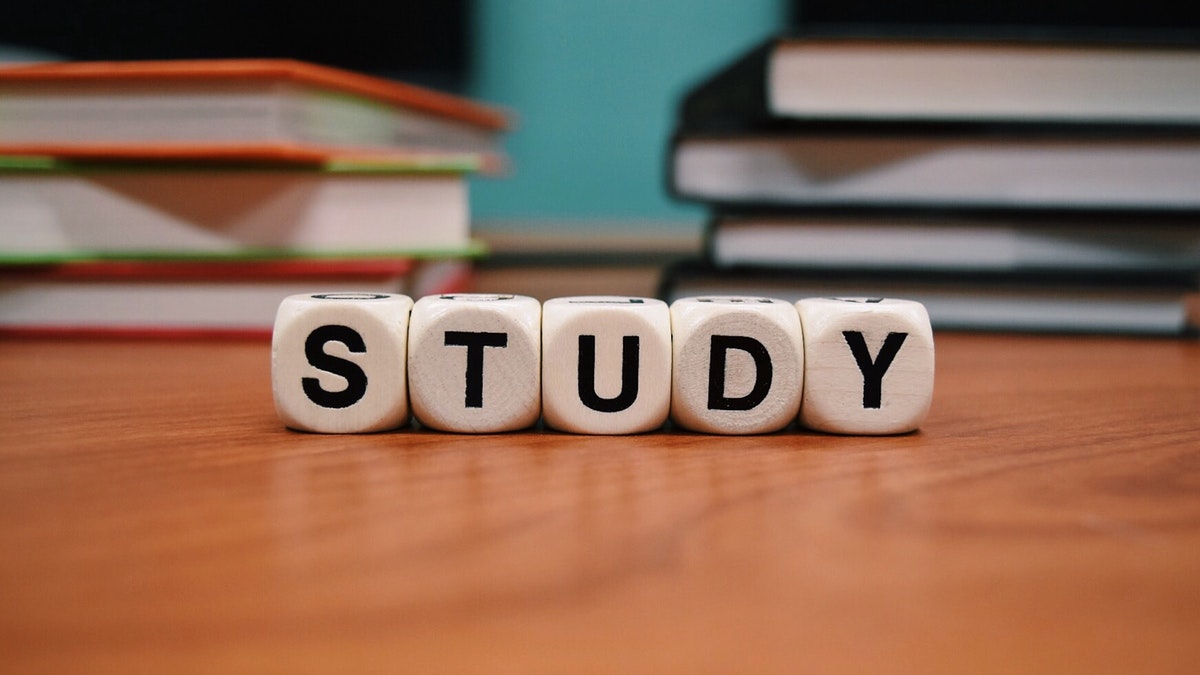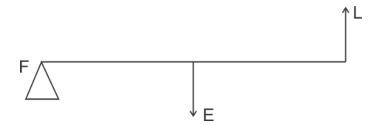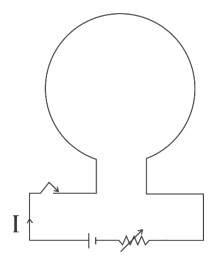ICSE Class 10 Physics 2020 Questions
Physics is Science Paper - 1. The duration of the paper is two hours. Section I is compulsory. Attempt any four questions from Section II.

Section I (40 Marks)
Question 1
(a) (i) Define moment of force.
(ii) Write the relationship between the SI and CGS unit of moment of force. [2]
(b) Define a kilowatt hour. How is it related to joule? [2]
(c) A satellite revolves around a planet in a circular orbit. What is the work done by the satellite at any instant? Give a reason. [2]
(d) (i) Identify the class of the lever shown in the diagram below:

(ii) How is it possible to increase the M.A. of the above lever without increasing its length? [2]
(e) Give one example of each when:
- Chemical energy changes into electrical energy.
- Electrical energy changes into sound energy. [2]
Question 2
(a) A crane 'A' lifts a heavy load in 5 seconds, whereas another crane 'B' does the same work in 2 seconds. Compare the power of crane 'A' to that of crane 'B'. [2]
(b) A ray of light falls normally on a rectangular glass slab. Draw a ray diagram showing the path of the ray till it emerges out of the slab. [2]
(c) Complete the path of the monochromatic light ray AB incident on the surface PQ of the equilateral glass prism PQR till it emerges out of the prism due to refraction. [2]

(d) Where should an object be placed in front of a convex lens in order to get:
- an enlarged real image
- enlarged virtual image? [2]
(e) A pond appears to be 2.7 m deep. If the refractive index of water is 4/3, find the actual depth of the pond. [2]
Question 3
(a) The wave lengths for the light of red and blue colours are nearly 7.8 x 10-7 m and 4.8 x 10-7 m respectively.
- Which colour has the greater speed in a vacuum?
- Which colour has a greater speed in glass? [2]
(b) Draw a graph between displacement from mean position and time for a body executing free vibration in a vacuum. [2]
(c) A sound wave travelling in water has wavelength 0.4 m. Is this wave audible in air? (The speed of sound in water = 1400 ms-1) [2]
(d) Why does stone lying in the sun get heated up much more than water lying for the same duration of time? [2]
(e) Why is it not advisable to use a piece of copper wire as fuse wire in an electric circuit? [2]
Question 4
(a) Calculate the total resistance across AB: [2]

(b) Two metallic blocks P and Q having masses in ratio 2:1 are supplied with the same amount of heat. If their temperatures rise by same degree, compare their specific heat capacities. [2]
(c) When a current carrying conductor is placed in a magnetic field, it experiences a mechanical force. What should be the angle between the magnetic field and the length of the conductor so that the force experienced is:
- Zero
- Maximum? [2]
(d) A nucleus 84X202 of an element emits an alpha particle followed by a beta particle. The final nucleus is aYb. Find a and b. [2]
(e) The diagram below shows a loop of wire carrying current I:

- What is the magnetic polarity of the loop that faces us?
- With respect to the diagram how can we increase the strength of the magnetic field produced by this loop? [2]
Section (40 Marks)
Question 5
(a) The figure below shows a simple pendulum of mass 200 g. It is displaced from the mean position A to the extreme position B. The potential energy at the position A is zero. At the position B the pendulum bob is raised by 5 m.

- What is the potential energy of the pendulum at the position B?
- What is the total mechanical energy at point C?
- What is the speed of the bob at the position A when released from B?
(Take g = 10 ms-2 and there is no loss of energy.) [3]
(b) (i) With reference to the direction of action, how does a centripetal force differ from a centrifugal force during uniform circular motion?
(ii) Is centrifugal force the force of reaction of centripetal force?
(iii) Compare the magnitudes of centripetal and centrifugal force. [3]
(c) A block and tackle system of pulleys has velocity ratio 4.
- Draw a neat labelled diagram of the system indicating clearly the points of application and direction of load and effort.
- What will be its V.R. if the weight of the movable block is doubled? [4]
Question 6
(a) A diver in water looks obliquely at an object AB in air.

- Does the object appear taller, shorter or of the same size to the diver?
- Show the path of two rays AC & AD starting from the tip of the object as it travels towards the diver in water and hence obtain the image of the object. [3]
(b) Complete the path of the ray AB through the glass prism in PQR till it emerges out of the prism. Given the critical angle of the glass as 42°. [3]

(c) A lens of focal length 20 cm forms an inverted image at a distance 60 cm from the lens.
- Identify the lens.
- How far is the lens present in front of the object?
- Calculate the magnification of the image. [4]
Question 7
(a) Give reasons for the following: During the day:
- Clouds appear white.
- Sky appears blue. [3]
(b) (i) Name the system which enables us to locate underwater objects by transmitting ultrasonic waves and detecting the reflecting impulse.
(ii) What are acoustically measurable quantities related to pitch and loudness? [3]
(c) (i) When a tuning fork [vibrating] is held close to ear, one hears a faint hum. The same [vibrating tuning fork] is held such that its stem is in contact with the table surface, then one hears a loud sound. Explain.
(ii) A man standing in front of a vertical cliff fires a gun. He hears the echo after 3.5 seconds. On moving closer to the cliff by 84 m, he hears the echo after 3 seconds. Calculate the distance of the cliff from the initial position of the man. [4]
Question 8
(a) The diagram below shows the core of a transformer and its input and output connections

- State the material used for the core.
- Copy and complete the diagram of the transformer by drawing input and output coils. [3]
(b) (i) What are superconductors?
(ii) Calculate the current drawn by an appliance rated 110 W, 220 V when connected across 220 V supply.
(iii) Name a substance whose resistance decreases with the increase in temperature. [3]
(c) The diagram above shows three resistors connected across a cell of e.m.f. 1.8 V and internal resistance r.

Calculate:
- Current through 3 Ω resistor.
- The internal resistance r. [4]
Question 9
(a) (i) Define heat capacity of a substance.
(ii) Write the SI unit of heat capacity.
(iii) What is the relationship between heat capacity and specific heat capacity of a substance? [3]
(b) The diagram below shows the change of phases of a substance on a temperature vs time graph on heating the substance at a constant rate.

- Why is the slope of CD less than slope of AB?
- What is the boiling and melting point of the substance? [3]
(c) A piece of ice of mass 60 g is dropped into 140 g of water at 50ºC. Calculate the final temperature of water when all the ice has melted.
(Assume no heat is lost to the surrounding)
Specific heat capacity of water = 4.2 Jg-1k-1
Specific latent heat of fusion of ice = 336 Jg-1 [4]
Question 10
(a) (i) Draw a neat labeled diagram of a d.c. motor.
(ii) Write any one use of a d.c. motor. [3]
(b) (i) Differentiate between nuclear fusion and nuclear fission.
(ii) State one safety precaution in the disposal of nuclear waste. [3]
(c) An atomic nucleus A is composed of 84 protons and 128 neutrons. The nucleus A emits an alpha particle and is transformed into a nucleus B.
- What is the composition of B?
- The nucleus B emits a beta particle and is transformed into a nucleus C. What is the composition of C?
- What is mass number of the nucleus A?
- Does the composition of C change if it emits gamma radiations? [4]